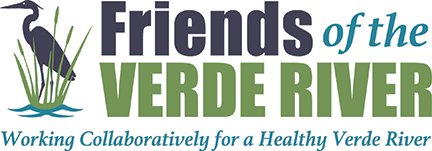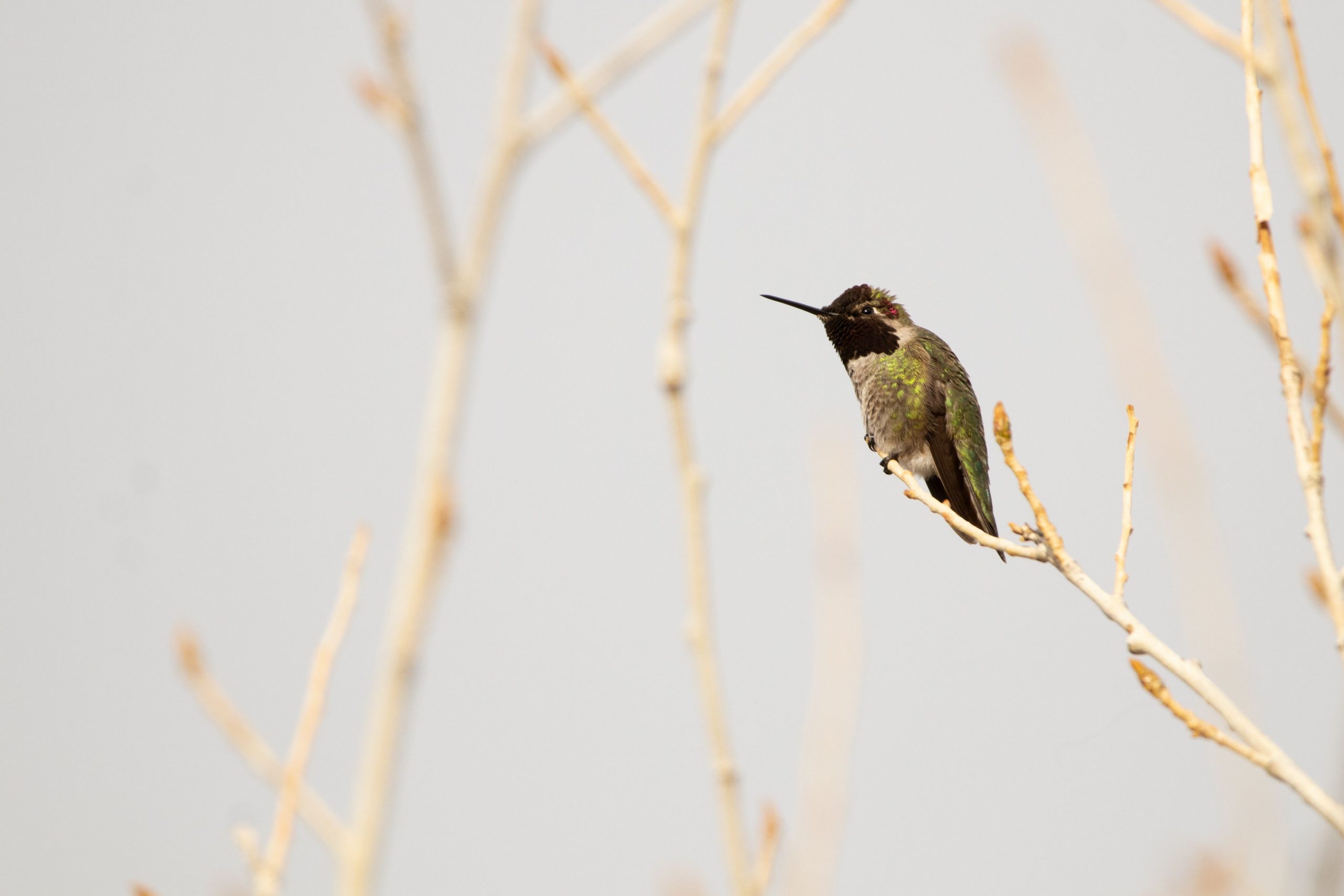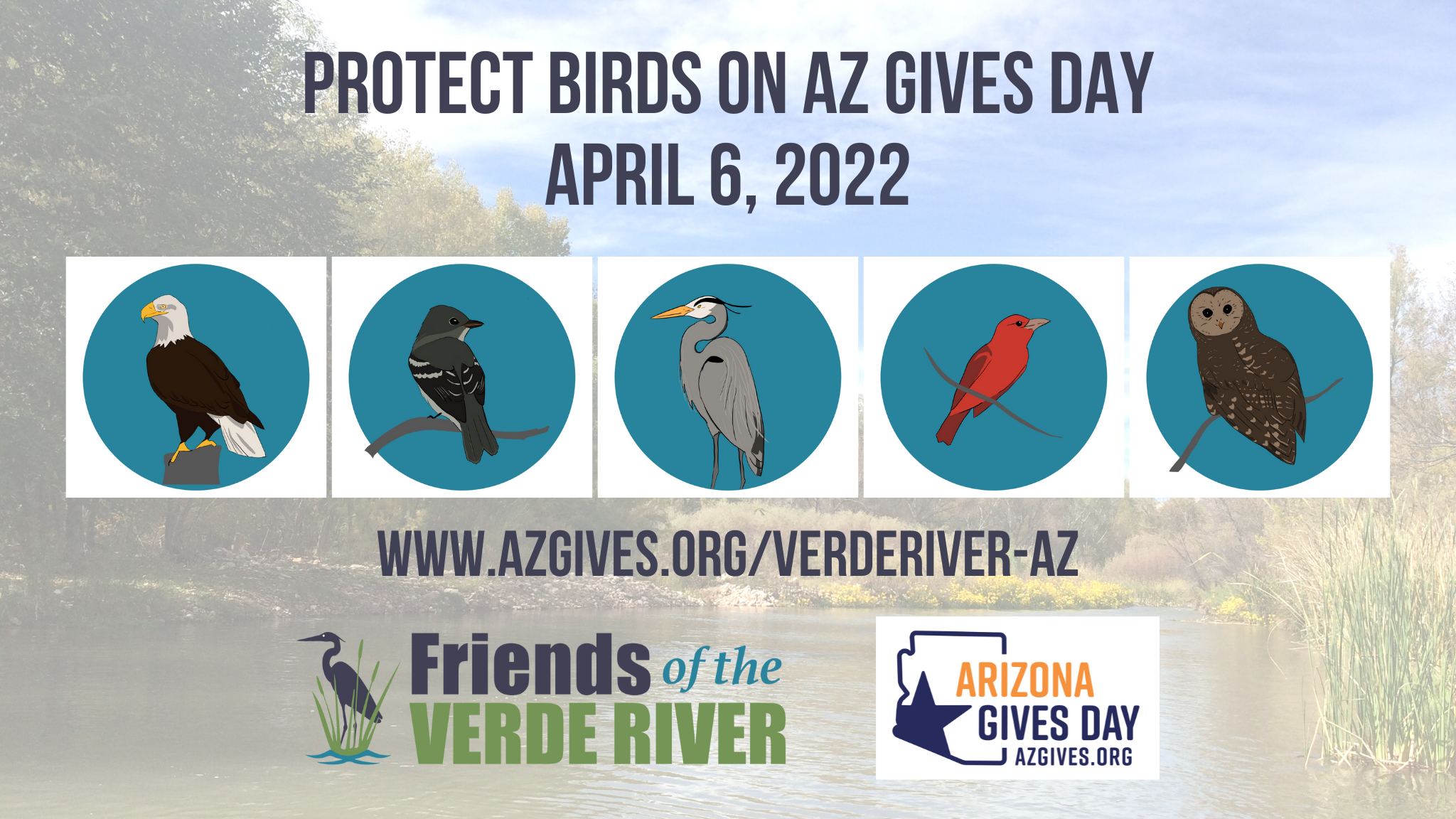February 2022
I heard my first cactus wren of the season in full throated song on the last day of January. He was sitting on the highest point of an Italian cypress that was growing by the street. Across my driveway, at the top of a peach tree in our fruit orchard, was a curve-billed thrasher, singing a much more melodious song.
Although it is still cold in early February, some of our bird friends were busily staking out their territories, already defending the good places to nest. Others were still quiet, like the cardinals that I know are around.
Over by the river in Dead Horse Ranch State Park, I’ve enjoyed seeing the bald eagles fishing. The other day I stopped to look at some birds in a tree. Before I could get my binoculars on them, a woman spoke from behind me. “Western bluebirds and lesser goldfinches,” she informed me. I thanked her and walked on. People are like that around here. Everyone knows the birds, it seems.
But I’m worried. Have you heard about the great songbird disappearance? In September of 2019, people were stunned to learn that, since 1970, the North American continent had lost three billion birds. Another way of looking at this staggering information is that, since 1970, three out of every ten birds were just gone.
To figure this out, researchers looked at different sources of information taken from mostly volunteer-led bird counts. They looked at three sources: the North American Breeding Bird Survey, an annual spring bird count; the Audubon Christmas Bird Count, a volunteer effort that takes place in December and January; and the International Shorebird Survey, which focuses on shorebirds like plovers and sandpipers.
Astonishingly, the declines in bird numbers were across the board. They did see that a few groups of birds, for example waterfowl and raptors, are thriving, thanks to habitat restoration and other conservation efforts. But declines in almost all other bird species far outweighed the gains.
The reasons for the decline are likely many. Reduction in habitat is one. Habitat is a catch-all term for the places animals can use for food, water, protection from predation, nesting, and roosting. At Friends of the Verde River, we devote a lot of our time and resources to improving habitat. We hire crews of young people and local military veterans to remove invasive, non-native plants that crowd along the riverbanks, degrading habitat for our native birds and other animals.
Many of you may have joined in on a volunteer workday to improve habitat. Your help matters! This is work we will always need to do if we want to support our native birds and other wildlife. You can help at your home by planting natives that bloom and set seeds or fruits attractive to birds and wildlife and by leaving leaves and branches on the ground for cover in a few places. You can install a small water source, keep cats indoors, and not use pesticides. All of these actions make a difference!
Let’s talk about pesticides, the other major cause linked to the decline in songbirds. It’s worth reminding ourselves that Rachel Carson sounded the alarm in 1962 about pesticides with the publication of Silent Spring. At the time, Rachel Carson’s work was instrumental in halting the use of DDT, a potent insecticide that dramatically reduced populations of many birds.
Among the birds damaged by DDT is the American bald eagle. It is worth remembering that, not so long ago, the bald eagle was once gravely endangered. It is still recovering. If you are awed by our bald eagles and enjoy watching them fish from the ponds at Dead Horse Ranch State Park, as I do, you can thank the people who outlawed the use of DDT.
Today, there is growing concern about the pesticides called neonicotinoids. Studies have shown that migrating songbirds lost weight and delayed migration after eating as little as one or two seeds treated with neonicotinoid insecticides. A little weight loss might not seem a concern, but for a songbird about to embark on a continent-spanning migration, it’s a big deal.
A study published in 2020 tied the use of noenicitinoids directly to declines in breeding birds in the United States. And not only birds but insects, of course, are killed by pesticides. But that is the point, you might say! Yes, but birds eat insects. It’s one thing to kill a bug with an insecticide. It’s another thing to kill a bug with a long-lasting poison that then kills the bird that eats the bug or contaminated seeds.
So here’s another thing you can do to protect birds. When you buy seeds and plants for your yard and garden, look for ones that have not been treated with these long-lasting, systemic pesticides.
Our birds will thank you.
For more information, contact us at verderiver.org.
Illustration: Western Bluebird pair-bonding behavior by Maya Rappaport
This article was originally published in the print editions of the Cottonwood Journal and the Camp Verde Journal on February 23, 2022.



